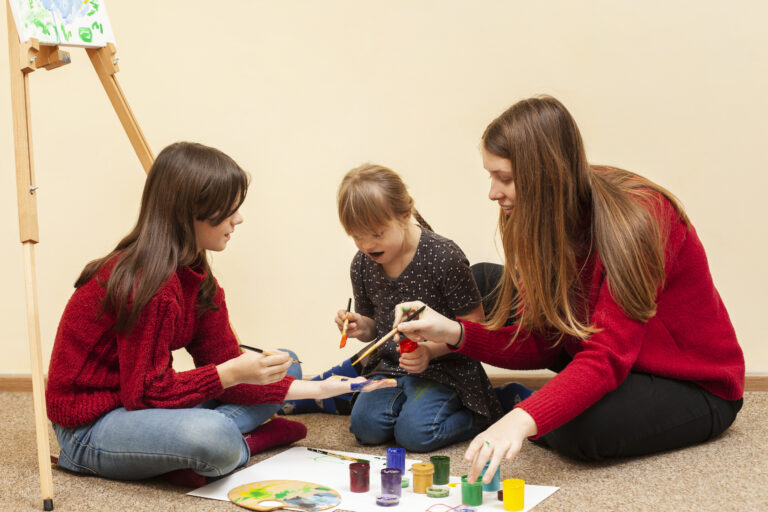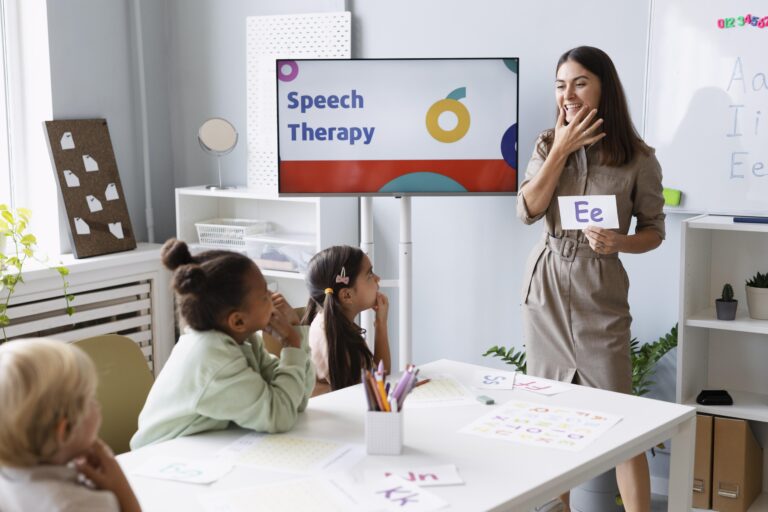Sensory Play: Boosting Child Development Effectively
Sensory play is not merely a form of amusement; it is a pivotal part of development, especially for children on the autism spectrum. Clinics often recommend structured sensory activities as they can lead to significant improvements in cognitive, social, and motor skills. When preparing for the new school year, as young individuals progress from achieving their high school diploma to pursuing a college education, the foundation laid by early sensory integration can influence their success. In Wales and beyond, educators and parents are recognizing the transformative power of sensory play. Keep reading to uncover how these engaging activities can be a vital tool in your child’s developmental journey.
Key Takeaways
- Sensory play is fundamental for cognitive and motor skill development in children
- Special education increasingly integrates sensory experiences for practical learning
- Sensory-rich environments at home and school are crucial for neurodiverse children’s growth
- Outdoor sensory activities facilitate holistic development and connection with nature
- Developing Social Skills Through Sensory Play
- Food-based sensory activities enhance learning and promote healthy eating habits in children
Why Sensory Play Is Key to Childhood Development
Engaging a child’s senses lays the foundational bricks of cognitive development, enabling young minds to enhance their problem-solving abilities and adaptive skills. Sensory play, often seen as a simple leisure activity, is in reality a complex learning process. It serves as both therapy and education, especially for those requiring reasonable accommodation such as individuals with Tourette Syndrome. Through tactile exploration, children learn to process and understand the world around them, integrating sensory experiences to build robust cognitive functions. Concurrently, stimulation of motor skills through sensory-rich textures and materials leads to precise movements and coordination, nurturing physical development alongside mental agility.
Enhancing Cognitive Skills Through Sensory Experiences
Integrative education in the United States increasingly recognizes the impact of sensory play in strengthening cognitive abilities. Through careful incorporation into special education curricula, sensory experiences help bridge the gap between theoretical learning and practical life skills, facilitating enhanced understanding and retention in children with diverse learning needs.
As a facet of early childhood intervention, tactile and sensory-based activities are instrumental in cementing the connection between cognitive development and real-world experiences. Vocational education programs, particularly for older students, build on this foundation by tailoring hands-on learning to reinforce job skills, independence, and adaptive capabilities.
Stimulating Motor Skills With Textured Play
Within Pennsylvania’s educational landscape, innovative methods that integrate sensory materials into learning environments are elevating child cognition. These dynamic resources bolster literacy development, as children engage with varied textures that stimulate neural pathways, enhancing their ability to process complex concepts, including the fundamental precepts of reading and writing.
Parents witness a marked improvement in their child’s motor skills as they interact with sensory-rich learning tools. The active manipulation of objects not only enriches tactile experiences but also sharpens cognitive abilities, laying a sturdy foundation for academic pursuits in literacy and beyond.
Creating Effective Sensory Play Environments at Home
Constructing the right environment at home for sensory play is pivotal for advancing a child’s developmental trajectory. Parents and caregivers seeking to enhance neurologic outcomes and sensory understanding, particularly for those navigating life with deafness or other sensory pathologies, must be thoughtful in selecting materials. These materials should provide varied sensory input, fostering an ecosystem where a child can safely explore and engage. Ensuring that play areas are both secure and stimulating is essential for tapping into the innate learning processes that play a critical role in a child’s evolving neurology.
Selecting the Right Materials for Varied Sensory Input
When curating materials for sensory play, specialists within the realm of individualized education program planning carefully consider items that accommodate the unique needs of each child. Such material selection is as crucial in a family’s home as it is in a boarding school’s specialized classroom, ensuring that each tactile experience contributes effectively to the child’s learning and development.
Embracing educational technology, educators and therapists recommend resources that not only aid children with a physical disability but also foster a sense of community. By integrating technologically advanced tools into sensory play, they enable every child to engage and interact with their environment in meaningful, developmentally appropriate ways.
Setting Up Safe and Engaging Play Areas for Children
When designing play areas that cater to children with diverse needs, including those with a disorder affecting their executive functions, the approach is both strategic and caring. Advocacy for the child’s well-being is reflected in the environment, with the layout and selection of sensory aids dovetailing seamlessly with pedagogical insights to create spaces that support learning and growth.
Incorporating elements that align with the child’s curriculum enhances their ability to integrate sensory experiences with educational outcomes. A meticulously planned play area not only guarantees safety but also stimulates cognitive processes, reinforcing the development of executive functions within a nurturing and interactive space.
Exploring the Benefits of Outdoor Sensory Activities
Outdoor sensory activities serve as essential tools in promoting holistic growth in children, playing a vital role in personalized learning programs that value inclusion and health. Providing a free appropriate public education, these activities break the confines of traditional classroom walls, offering exploratory learning experiences that are rich in stimuli. They yield a multitude of benefits, from fostering psychomotor development in an adapted physical education setting to cultivating a deep-rooted connection with the natural environment. Engaging the senses outdoors invites an organic integration of educational objectives with the vibrant textures, sounds, and aromas of nature, thus ensuring that every child receives a well-rounded, sensory-rich educational journey.
Promoting Physical Health and Exploration
Outdoor sensory activities provide more than just fresh air; data backs up their significance in enhancing physical health. A psychologist engaged in child development studies has connected these activities with improvements in children dealing with disabilities like muscular dystrophy, suggesting that the diverse stimuli found in nature can catalyze crucial muscular responses and foster overall health.
An extensive impact report has underlined the inextricable link between intelligence development and exploration in outdoor sensory play. Such explorations, ebbing and flowing through the natural world’s rhythm, contribute to children’s cognitive expansion, fortifying their understanding of the environment and their place within it.
Encouraging Connection With Nature Through Senses
Outdoor activities with a sensory focus bridge gaps for children with learning differences by immersing them in nature, which invites a unique type of accessibility to learn through the senses. The infinite variability in natural textures, sights, and sounds captures their attention, promoting an intuitive grasp of complex ideas.
In adherence to the terms of service highlighted by the Rehabilitation Act of 1973, inclusive outdoor environments cater to developing exploration skills in children, reinforcing their connective experiences with the natural world. These encounters serve not just for educational alignment but also aid in the rehabilitation and progressive engagement of all learners.
Developing Social Skills Through Sensory Play
Sensory play is not just beneficial for cognitive and motor skills but also plays a crucial role in the development of social skills. For children on the autism spectrum and those with other neurodiverse conditions, engaging in sensory-rich activities can significantly enhance their ability to interact socially. By participating in group sensory activities, children learn to navigate social cues, practice sharing and turn-taking, and develop empathy. In a neurodiverse school, these activities are especially important as they foster an inclusive environment where all students can thrive socially and emotionally.
Fostering Social Interaction in Group Settings
Structured sensory play sessions in group settings create a safe space for children to practice social skills. These activities encourage cooperation and communication, helping children learn to express their needs and understand others’ perspectives. For instance, collaborative tasks like building a sensory garden or participating in a group art project with different textures and materials require children to work together, fostering teamwork and social bonds.
Building Empathy and Understanding Through Shared Experiences
Sensory play can also be a medium for building empathy. When children engage in activities that involve role-playing or collaborative storytelling with sensory props, they begin to understand and appreciate the feelings and experiences of their peers. These shared sensory experiences can bridge gaps between children of different abilities, promoting inclusivity and mutual respect.
Enhancing Communication Skills
Many sensory activities are designed to stimulate verbal and non-verbal communication. For example, sensory bins with themed objects can prompt discussions and storytelling, helping children to articulate their thoughts and engage in meaningful conversations. Additionally, activities that involve following instructions, such as cooking with sensory ingredients, enhance listening skills and the ability to follow multi-step directions.
The Role of Food Textures in Sensory Development
In early childhood education, incorporating food textures into sensory play activities provides a flavorful avenue for learners to explore new sensations. Research suggests that the varied consistencies and temperatures of foods can significantly contribute to cognitive mapping in a young child’s brain. Consequently, these culinary encounters enrich their learning experiences.
French language classes, when taught to young learners, often include tasting sessions that blend cultural immersion with sensory exploration. This innovative approach promotes linguistic growth while encouraging children to connect with French culture through their senses, predominantly taste and smell.
Teachers and therapists also recognize the importance of sensory play with food textures for enhancing mental health. As children manipulate different types of food, they become more comfortable with a variety of textures and tastes, which can alleviate anxiety related to new foods and support positive dietary habits.
Learners who engage with food through sensory play not only expand their palates but also develop important fine motor skills. Scooping, pouring, and kneading are all actions that can help a child explore the properties of food while fortifying hand-eye coordination and tactile processing abilities, essential components of a comprehensive early childhood education curriculum.



